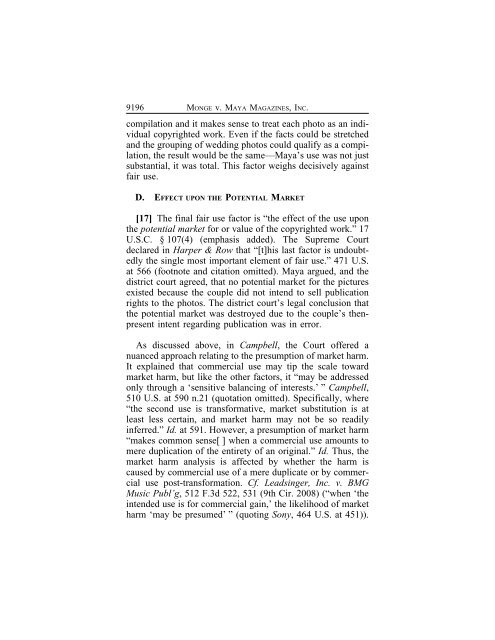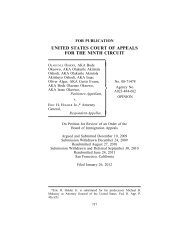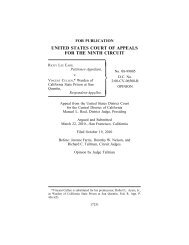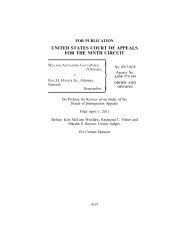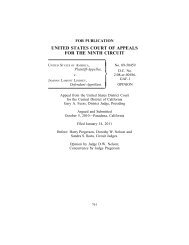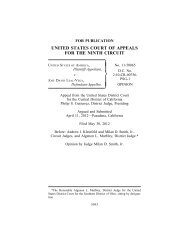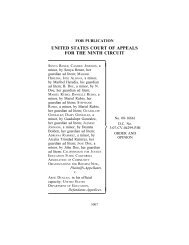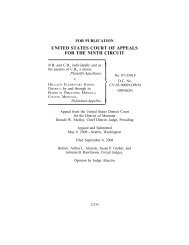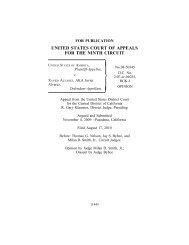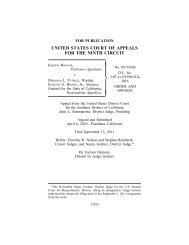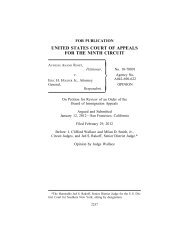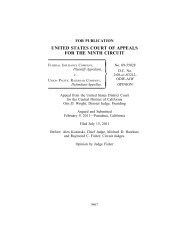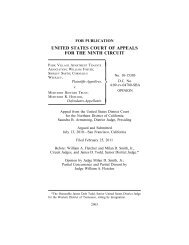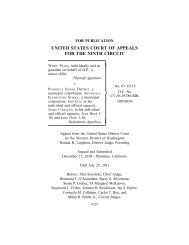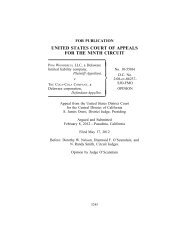NOELIA MONGE V. MAYA MAGAZINES, INC. - Ninth Circuit Court of ...
NOELIA MONGE V. MAYA MAGAZINES, INC. - Ninth Circuit Court of ...
NOELIA MONGE V. MAYA MAGAZINES, INC. - Ninth Circuit Court of ...
Create successful ePaper yourself
Turn your PDF publications into a flip-book with our unique Google optimized e-Paper software.
9196 <strong>MONGE</strong> v. <strong>MAYA</strong> <strong>MAGAZINES</strong>, <strong>INC</strong>.<br />
compilation and it makes sense to treat each photo as an individual<br />
copyrighted work. Even if the facts could be stretched<br />
and the grouping <strong>of</strong> wedding photos could qualify as a compilation,<br />
the result would be the same—Maya’s use was not just<br />
substantial, it was total. This factor weighs decisively against<br />
fair use.<br />
D. EFFECT UPON THE POTENTIAL MARKET<br />
[17] The final fair use factor is “the effect <strong>of</strong> the use upon<br />
the potential market for or value <strong>of</strong> the copyrighted work.” 17<br />
U.S.C. § 107(4) (emphasis added). The Supreme <strong>Court</strong><br />
declared in Harper & Row that “[t]his last factor is undoubtedly<br />
the single most important element <strong>of</strong> fair use.” 471 U.S.<br />
at 566 (footnote and citation omitted). Maya argued, and the<br />
district court agreed, that no potential market for the pictures<br />
existed because the couple did not intend to sell publication<br />
rights to the photos. The district court’s legal conclusion that<br />
the potential market was destroyed due to the couple’s thenpresent<br />
intent regarding publication was in error.<br />
As discussed above, in Campbell, the <strong>Court</strong> <strong>of</strong>fered a<br />
nuanced approach relating to the presumption <strong>of</strong> market harm.<br />
It explained that commercial use may tip the scale toward<br />
market harm, but like the other factors, it “may be addressed<br />
only through a ‘sensitive balancing <strong>of</strong> interests.’ ” Campbell,<br />
510 U.S. at 590 n.21 (quotation omitted). Specifically, where<br />
“the second use is transformative, market substitution is at<br />
least less certain, and market harm may not be so readily<br />
inferred.” Id. at 591. However, a presumption <strong>of</strong> market harm<br />
“makes common sense[ ] when a commercial use amounts to<br />
mere duplication <strong>of</strong> the entirety <strong>of</strong> an original.” Id. Thus, the<br />
market harm analysis is affected by whether the harm is<br />
caused by commercial use <strong>of</strong> a mere duplicate or by commercial<br />
use post-transformation. Cf. Leadsinger, Inc. v. BMG<br />
Music Publ’g, 512 F.3d 522, 531 (9th Cir. 2008) (“when ‘the<br />
intended use is for commercial gain,’ the likelihood <strong>of</strong> market<br />
harm ‘may be presumed’ ” (quoting Sony, 464 U.S. at 451)).


